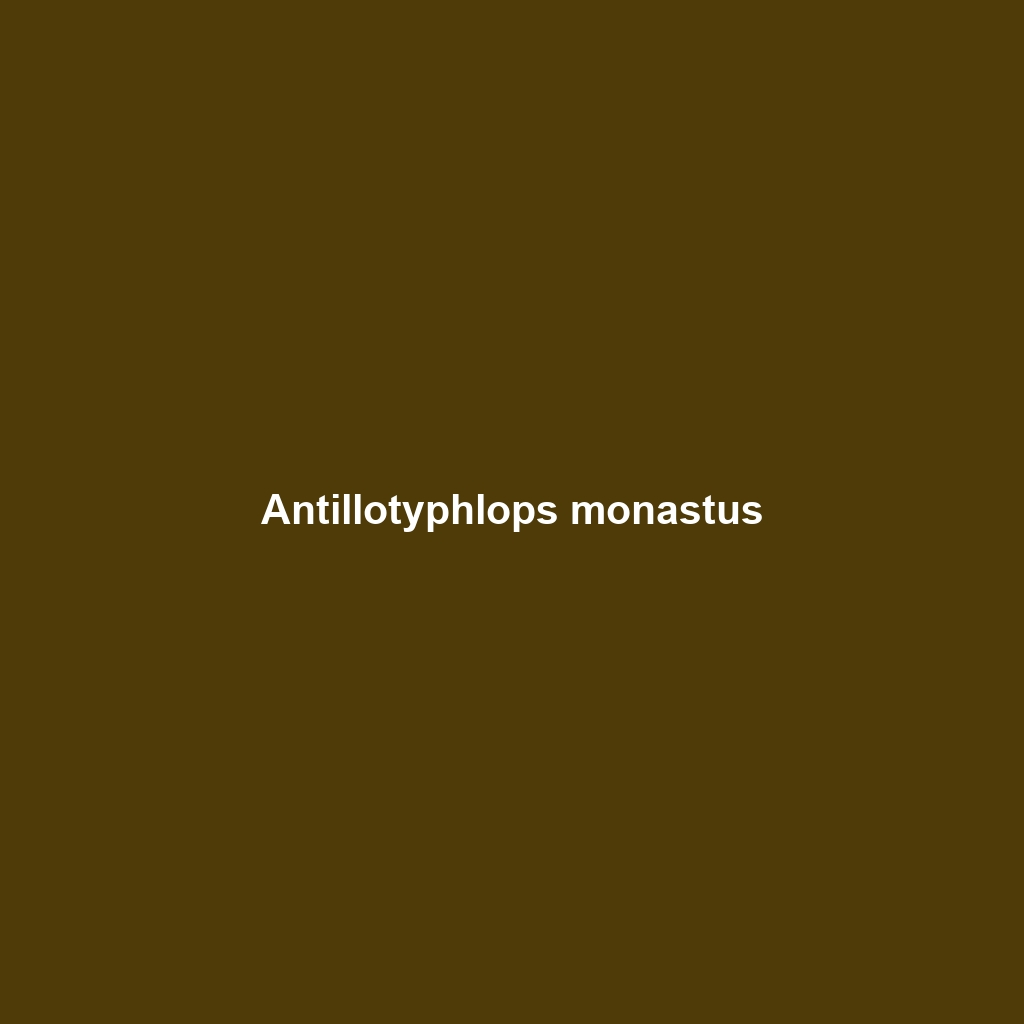Antillotyphlops monastus
Common Name: Antillotyphlops monastus
Scientific Name: Antillotyphlops monastus
Habitat
Antillotyphlops monastus, commonly known as the Antillean blind snake, is primarily found in the Caribbean region, specifically in the islands of Jamaica, Cuba, and the Bahamas. This species prefers moist, sandy, or loamy soils often found in tropical habitats such as forests, grasslands, and shrublands. Its subterranean lifestyle makes it less visible, as it spends most of its time burrowing in soil and leaf litter.
Physical Characteristics
This small, slender snake typically measures between 15 to 30 inches in length. The overall color ranges from light gray to brownish, often with a smooth texture that aids in its burrowing behavior. Antillotyphlops monastus has a distinct cylindrical shape, and its tiny, scarcely visible eyes are covered by scales, reflecting its adaptation to a subterranean lifestyle. Its lack of limbs further enhances its streamlined appearance.
Behavior
Antillotyphlops monastus is primarily a fossorial (burrowing) species, exhibiting nocturnal and crepuscular behavior patterns. This snake is generally solitary and is known for its low activity levels, spending most of its time underground to avoid predators and conserve moisture. It relies on its sensitive scales to navigate through the soil and detect vibrations, which helps it evade threats and find food.
Diet
This blind snake feeds mainly on small invertebrates, including ants, termites, and larvae. Its diet is primarily composed of soft-bodied prey that it hunts by sensing vibrations in the soil. Antillotyphlops monastus plays a crucial role in its ecosystem by helping maintain the population of its prey, demonstrating its significance in maintaining ecological balance.
Reproduction
Antillotyphlops monastus engages in oviparous reproduction, typically laying eggs during the warmer months of the year. While the exact breeding season may vary by location, it generally takes place in the spring. The female usually lays a clutch of several eggs, which incubate in the surrounding substrate. Offspring emerge as miniature versions of adults, already capable of burrowing into the soil shortly after hatching.
Conservation Status
Currently, Antillotyphlops monastus is classified as vulnerable due to habitat loss and degradation resulting from agricultural expansion and urbanization. Conservation efforts are crucial to protect its habitat and maintain populations of this unique species.
Interesting Facts
Despite being called a “blind snake,” Antillotyphlops monastus is not truly blind; instead, it has evolved to rely less on vision. This species is also a part of a larger family of blind snakes known for their elongated bodies and reduced eyesight, adding to the fascinating diversity of serpents in the Caribbean.
Role in Ecosystem
Antillotyphlops monastus plays a vital role in its ecosystem as both predator and prey. As a predator of small invertebrates, it helps control their populations, thereby contributing to soil health and plant growth. Additionally, it serves as a food source for larger species, contributing to the overall biodiversity and food web in its habitat.
